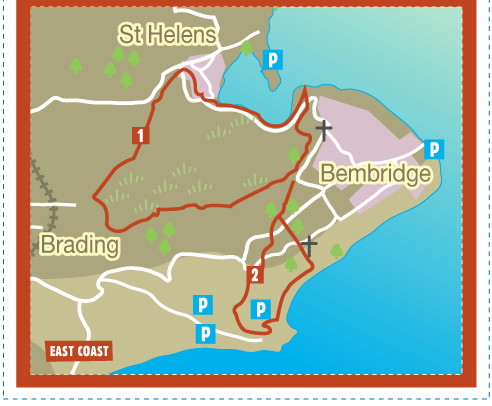 |
 |
 |
|
Introduction : The cosy and picturesque village of Bembridge is considered to be one of the largest villages in Europe. Situated nearly on the eastern most tip of the Island, it is somewhat isolated from the rest of the Island and this contributes to the fact that it seems to very much have its own individual character. Bembridge Harbour to this day is a well-used and busy natural harbour at the mouth of the Eastern River Yar. The harbour is particularly well protected from bad weather with a narrow access channel leading around to the North in the direction of St. Helens. There are many houseboats moored up alongside the main road, some of which even offer B&B or afternoon teas. Inside the village you can find a good range of shops and galleries. On the outer boundaries of the village you will find the last remaining windmill on the Isle of Wight, which was built around and about 1700 and is now protected and managed by the National Trust. The town of Brading is also of strong historical interest. It was once a busy port, during the Roman occupation as the Yar once swelled across the now silted marshland. It is now a quirky and interesting town with many stories and connections to the smuggling trade. There are many excellent walks around this area with the marshes sitting neatly between the two places, the village of St Helens on the opposite side of Bembridge Harbour, Brading Down further inland, and Culver and Whitecliff Bay towards the South-eastern shore. These areas of coast from Bembridge to St. Helens, offer lovely sandy and pebbly beaches, each offering a tranquil and safe environment that is good for bathing if so desired. The marsh itself is not directly accessible as it is under protection by the RSPB but there are several good viewing points from paths that circumnavigate the edge and the old sea wall and quay at the Brading end. |
home | birding
on the iow | our
species | map | west
yar estuary | newtown | medina
estuary |
south west coast | east
coast | acknowledgements | links |
